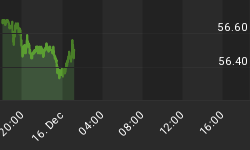Last week I stated that a close below 1407.75 on the SP500 would be a double top, and with the SP500 closing at 1406.58, we have our signal. A weekly close below 1398.04 would provide confirmation, and kick off a multi-week sell off.
It isn't so much that investor sentiment has gotten bullishly extreme (i.e., bear signal), but how we have arrived at this point. At the bottom 3 months ago, investors weren't really all that bearish as they were expecting QE3. The Federal Reserve has told us we will get QE3 for weeks now, but what the threshold for triggering that event will be remains unknown. This is a rally based upon hope and vapors (i.e., diminishing volume). It is a market with little investment merit, and investors have made it clear that the only thing that counts is more QE3. Yes, we are having more QE, and Bernanke confirmed as much at Jackson Hole. But when is the big question.
Looking ahead, the calendar is certainly filled with many opportunities for QE announcements thus giving investors multiple opportunities for hope. All the jawboning is likely to wear thin if the Fed doesn't deliver. The most obvious trigger for more QE will be lower prices on the SP500, but this seems impossible as the market has had difficulty of clearing itself of weak hands for over 5 months now. This a sign of a market top by the way, and without that big sell off or scary market moment when the world is looking really grim, it is unlikely that this market will move appreciably higher over the next several months. And this has become the real paradox for those investors who have pinned their hopes on Ben Bernanke and the Federal Reserve to deliver more QE.
Waiting for the Fed to pull the trigger has produced another problem for investors. This is inflation. While the Fed does it best to keep the balls in the air without really doing anything, real assets (gold and crude oil) continue to move strongly upward. These are signs of real headwinds for the equity markets. $4 a gallon gasoline is a real headwind for the economy. Can the Fed a figure out a way to have its cake and eat it too?
Price is the final arbiter. A weekly close below 1398.04 on the SP500 confirms the double top. It really is that simple. Sentiment indicators, like the "dumb money" will likely rollover as well. A weekly close above 1426.68 on the SP500 will likely lead to an acceleration in price. So pick your poison. Understand where you are on the playing field. If you pick (guess) wrong, don't stay too long.
The "Dumb Money" indicator (see figure 1) looks for extremes in the data from 4 different groups of investors who historically have been wrong on the market: 1) Investors Intelligence; 2) MarketVane; 3) American Association of Individual Investors; and 4) the put call ratio. This indicator is bearish, and just above the extremely bullish level.
Figure 1. "Dumb Money"/ weekly
Figure 2 is a weekly chart of the SP500 with the InsiderScore "entire market" value in the lower panel. From the InsiderScore weekly report: "We continue to see moderately high levels of selling across the market. From a historic perspective, the volume of activity is not particularly egregious, but there is obviously far greater conviction amongst sellers as compared to buyers. The Russell 2000 is now the leading contributor of negative sentiment and amongst sectors Consumer Discretionary and Energy are showing some of the worst sentiment."
Figure 2. InsiderScore "Entire Market" value/ weekly
Figure 3 is a weekly chart of the SP500. The indicator in the lower panel measures all the assets in the Rydex bullish oriented equity funds divided by the sum of assets in the bullish oriented equity funds plus the assets in the bearish oriented equity funds. When the indicator is green, the value is low and there is fear in the market; this is where market bottoms are forged. When the indicator is red, there is complacency in the market. There are too many bulls and this is when market advances stall. Currently, the value of the indicator is 71.24%. Values less than 50% are associated with market bottoms. Values greater than 58% are associated with market tops. It should be noted that the market topped out in 2011 with this indicator between 70% and 72%.
Figure 3. Rydex Total Bull v. Total Bear/ weekly
TheTechnicalTake offers a FREE e-newsletter: HERE
















